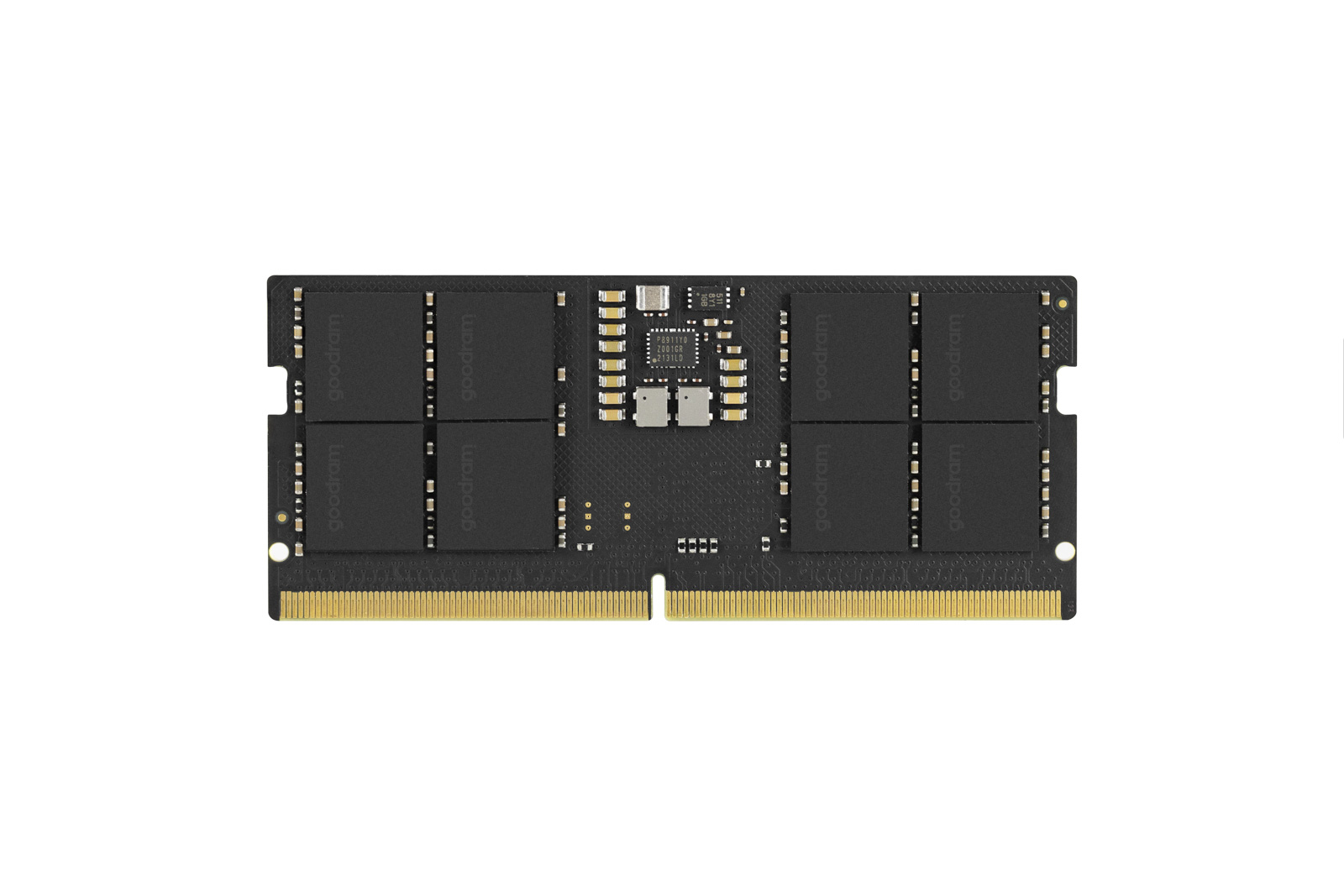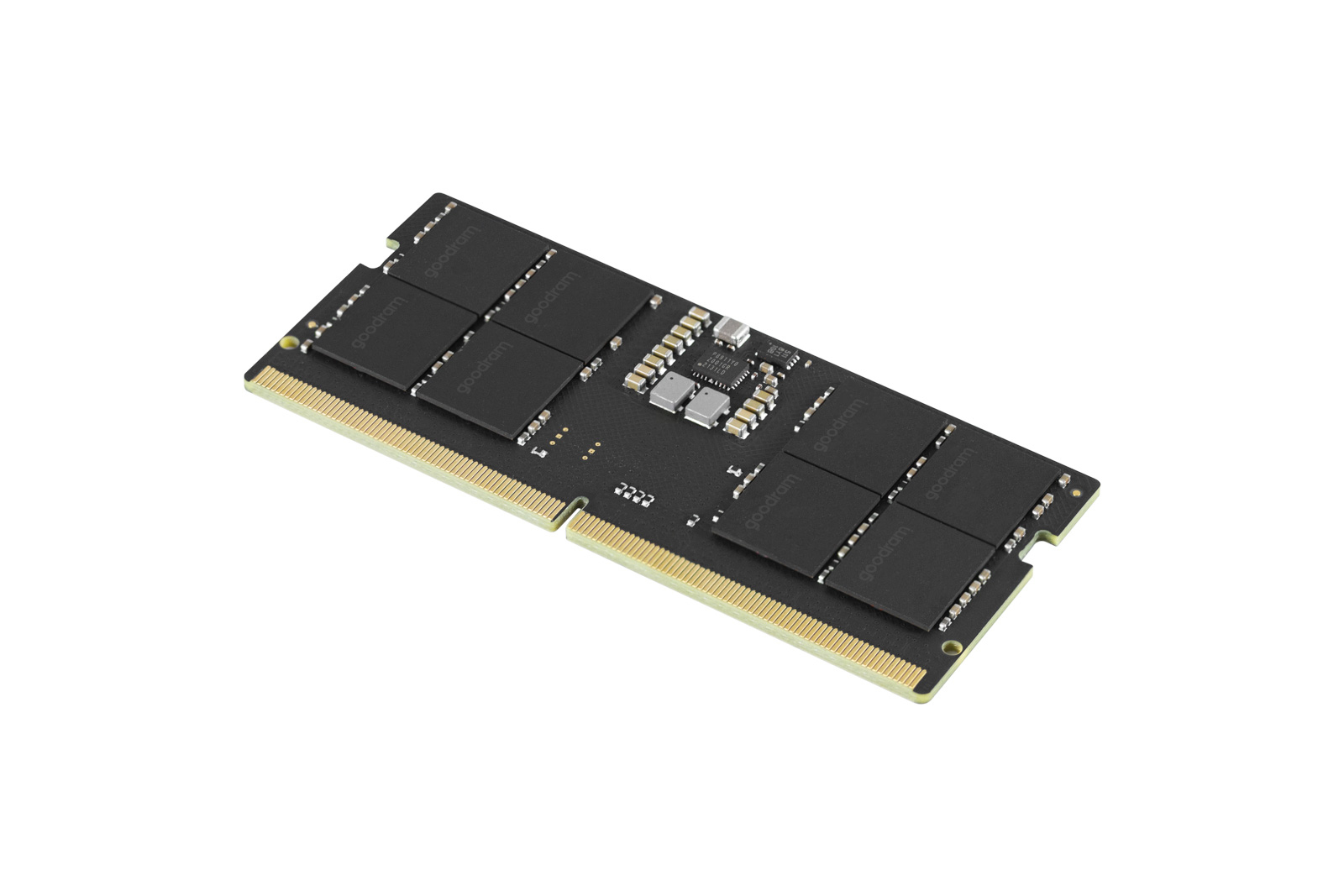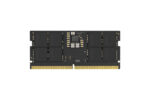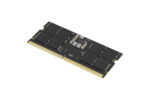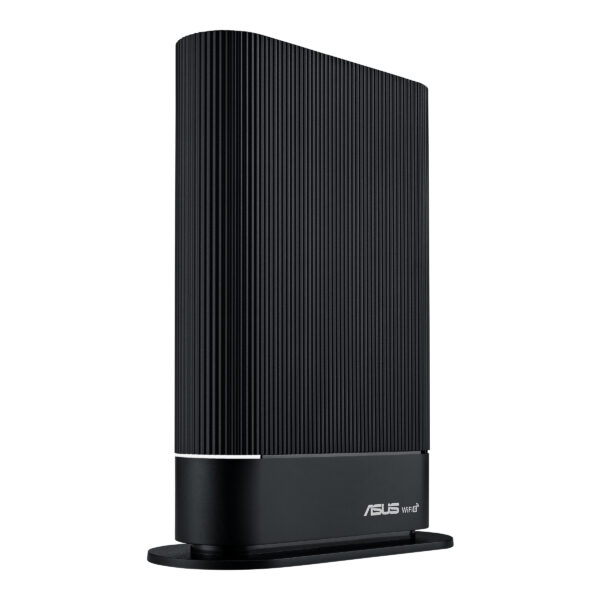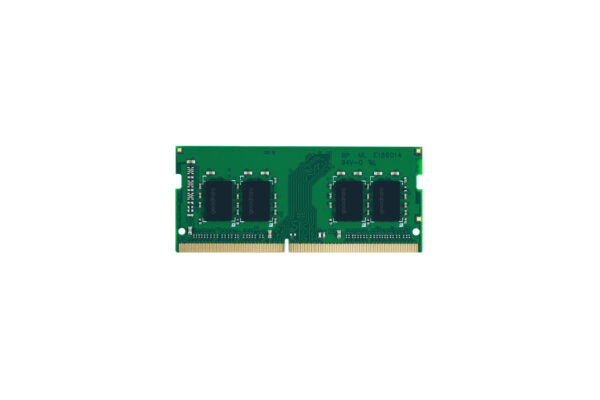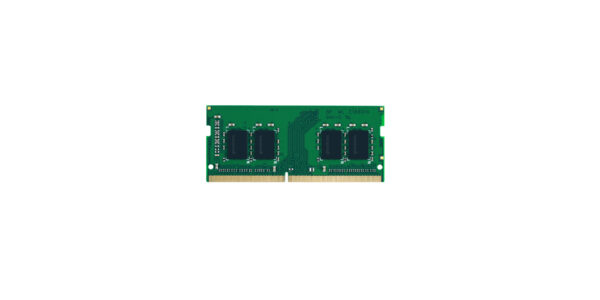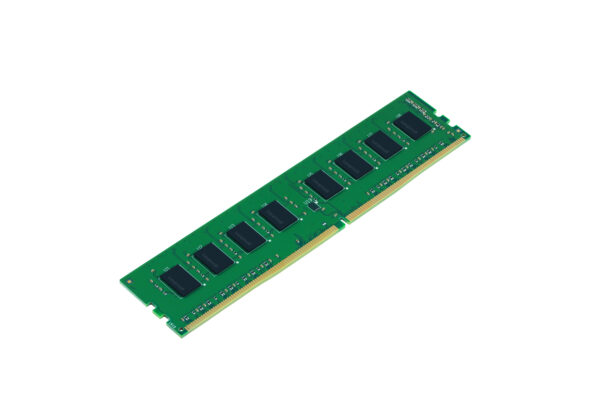Step into the future
GOODRAM DDR5 SODIMM memories represent a huge technological leap over previous generations. It is also an unprecedented performance. Users of platforms adapted to the latest standard will certainly appreciate the difference – DDR5 DRAMs represent an approximate 50% increase in bandwidth compared to the fourth generation, as well as twice the number of banks. Stability at such high clock rates is guaranteed by the PMIC, an embedded power management IC.
High performance
The advantages of using the latest generation of Goodram modules include more efficient system operation and loading, smooth switching between applications and faster operation with a large number of open browser windows. The use of appropriate technological solutions makes it possible to achieve high clocking, low power consumption and maintain the stability of DDR5 modules.
Reliability
Our fifth-generation modules use On-Die ECC technology, which allows for almost complete elimination of bit errors. For the user, this means high reliability of the modules when performing the most complex operations.
WIDER RANGE OF POSSIBILITIES
One of the most important components of our DDR5 memory modules is the PMIC (Power Management Integrated Circuit), or power management IC. It gives the modules customizable power management capabilities. The SPD HUB, is a combination of the EEPROM chip known from the previous generation of modules and the SPD (Serial Presence Detect) extended with a temperature sensor. This chip enables the storage of basic information about the module and its parameters in a broader spectrum.
Specifications
| On-Die ECC | Y |
| CAS latency | 46 |
| Internal memory | 16 GB |
| Memory layout (modules x size) | 1 x 16 GB |
| Internal memory type | DDR5 |
| Memory clock speed | 56000 MHz |
| Component for | Notebook |
| Memory form factor | 262-pin SO-DIMM |
| Memory voltage | 1.1 V |



